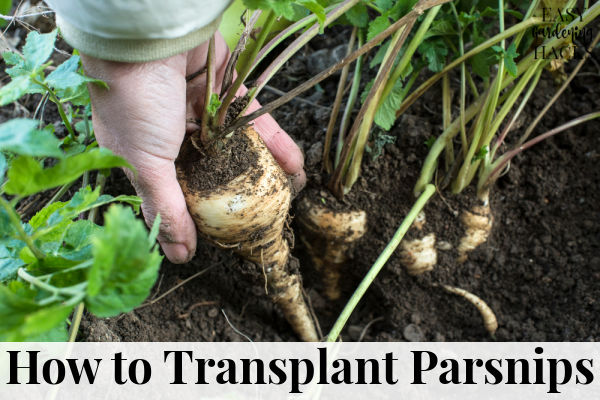Use these instructions to learn how to transplant parsnip seedlings this summer.

How to Transplant Parsnip Seedlings
If you live in a cooler growing zone you may have started your seeds indoors for the parsnip’s long growing season. Parsnips are a fall harvest root vegetable. If you are moving seedlings outside to plant in the ground, here are some tips for transplanting parsnip seedlings for the best chance at a successful season.
How to Harden Off Parsnip Seedlings for Transplanting
Most seedlings need to be hardened off for transplanting and parsnip is no exception. In fact, it is even more important you don’t skip this step with parsnip. Hardening off is a simple process.
To harden off your parsnip seedlings, you will just be taking them in and outside over a short period of time.
Start by setting your parsnip seedlings outdoors in a covered in controlled environment such as a porch. Keep them out for a short period of time such as half of a day, to start.
Increase how long your seedlings are out until they stay out overnight overnight.This process should only take a couple of days and you will be ready to transplant them!
How to Prepare the Soil for Transplanting Parsnips
To pair the soil for transplanting parsnips, you will need to loosen the soil about 12″ down. Then, you will need to add approximately 2 inches of compost and mix in.
Start by visualizing rows with plants about 2-3 inches apart.
Make sure you are transplanting to a spot that full sun for best results.
How to Transplant Parsnips
If you did the paper tube method, you can simply plant them with the tube. This makes it super easy to transplant and you are less likely to damage the roots that are tender at this point.
If you did not do the paper to method,You will need to be very gentle. First, dig a hole that is the same size as the container you grew your seedlings in.Then, gently remove the parsnip seedlings from their containers you grew them in with a butter knife.
Do not shake off any excess dirt! You can damage your roots by doing so and cause too much trauma for the plant to recover from. Just gently place each seedling in a hole and pat with extra dirt or compost.
Water you seedlings and watch them grow. If you have less than 1 inch of rain each week in the summer, make sure to water more frequently, especially in the beginning.

Leave a Reply